Clean Architecture
Clean architecture is a software design approach that separates the elements of a design into ring levels.
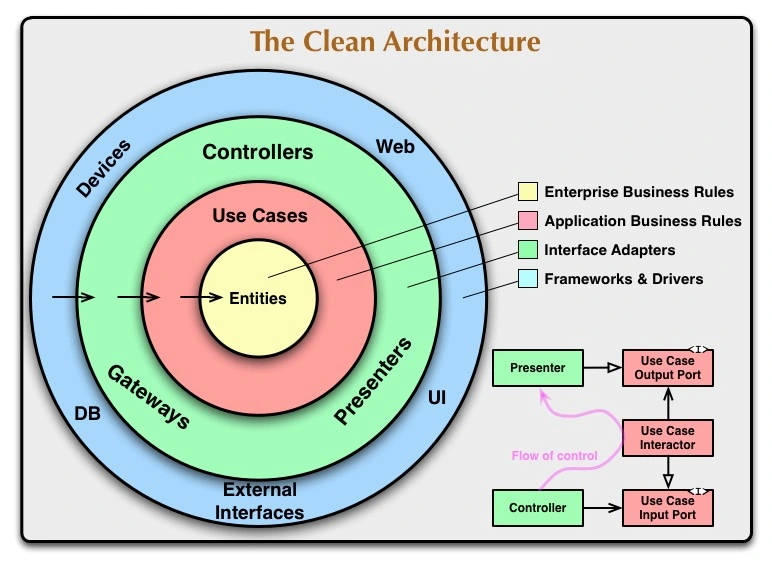
Entities: encapsulate enterprise wide business rules- Can be: Object with methods, set of data structures and functions
- Could be used by many different applications in the enterprise
Use Cases: Capture application business rules- Structure should indicate what the application is, not how it does it
Interface adapters: Set of adapters- Convert data from the format most convenient for the use cases and entities to the format most convenient for some external agency such as the Database or the Web
Frameworks & drivers: Glue code that communicates to the next circle inwards- Frameworks and tools such as Database, Web Framework, ...
- This layer is where all the details go, keep these things on the outside where they can do little harm
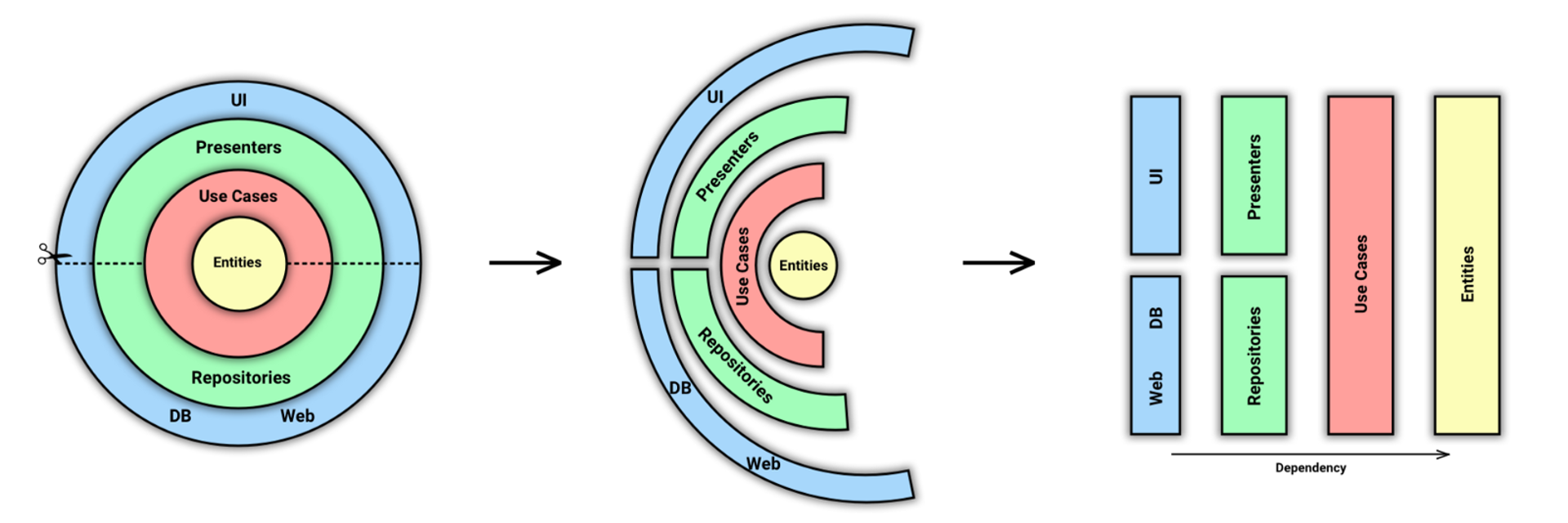
Clean architecture was created by Robert C. Martin and is a mix of several ideas presented below.
Hexagonal Architecture by Alistair Cockburn
Allow an application to equally be driven by users, programs, automated test or batch scripts, and to be developed and tested in isolation from its eventual run-time devices and databases.
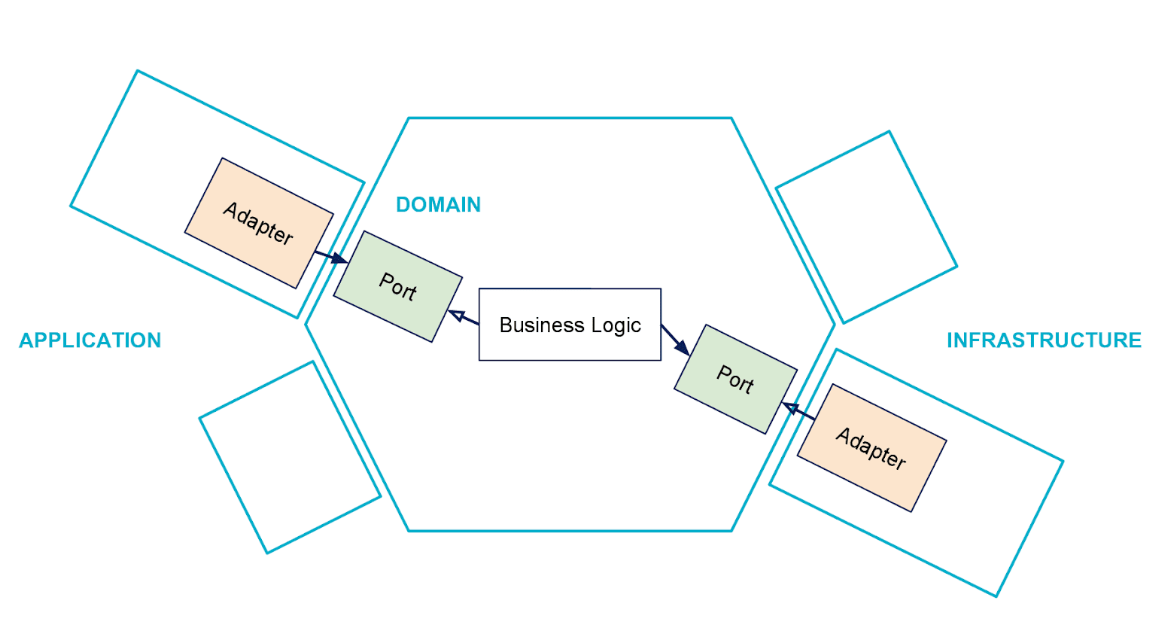
Also known as Ports / Adapters.
Onion Architecture by Jeffrey Palermo
Between the layers of the Onion, there is a strong dependency rule:
Outer layers can depend on lower layers, but no code in the lower layer can depend directly on any code in the outer layer.
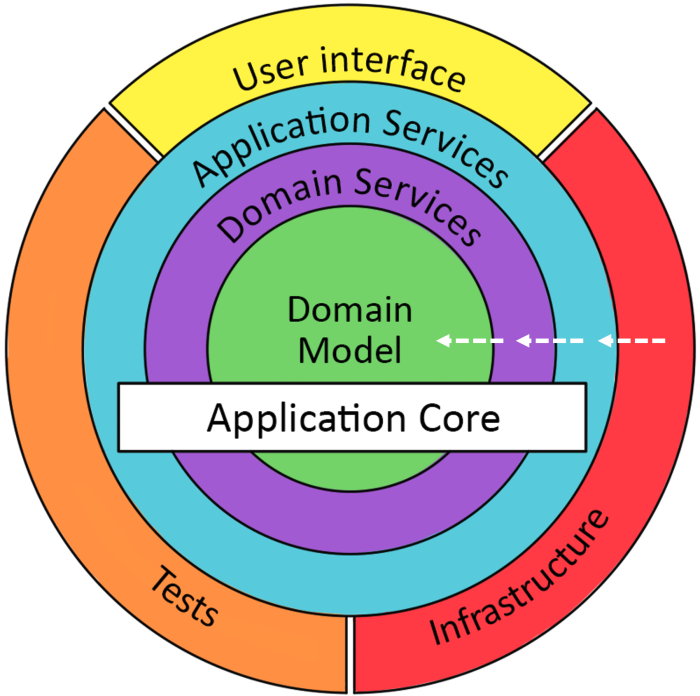
It is basically the Dependency Inversion Principle at the architecture level.
Use-Case Driven approach by Ivar Jacobson
Ivar Jacobson defined use cases as a special sequence of transactions, performed by a user and a system in a dialogue.
In other words, a use case describes a system’s visible behaviour as seen from the point of view of the user.
The power of use cases lies in their ability to provide a general overview of the system’s behaviour. They give you the big picture of a system to be developed and provide orientation, and they help you to understand a system. Without this understanding, decisions regarding the scope as well as regarding costs and benefits of the system are impossible to make.
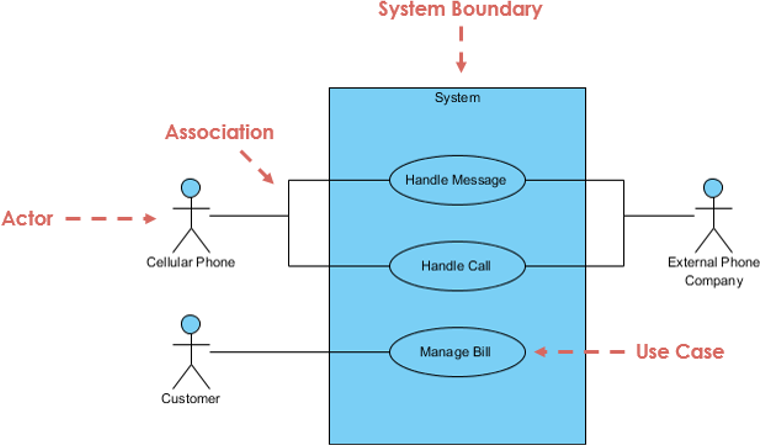
Here is an example in java:
public class WithdrawFundsUseCase implements Command.Handler<WithdrawFundsRequest, VoidResponse> {
private final BankAccountRepository repository;
public WithdrawFundsUseCase(BankAccountRepository repository) {
this.repository = repository;
}
public VoidResponse handle(WithdrawFundsRequest request) {
var accountNumber = getAccountNumber(request);
var amount = getTransactionAmount(request);
var bankAccount = repository.findRequired(accountNumber);
bankAccount.withdraw(amount);
repository.update(bankAccount);
return VoidResponse.EMPTY;
}
private AccountNumber getAccountNumber(WithdrawFundsRequest request) {
return AccountNumber.of(request.getAccountNumber());
}
private TransactionAmount getTransactionAmount(WithdrawFundsRequest request) {
return TransactionAmount.of(request.getAmount());
}
}
Screaming Architecture
The term screaming architecture is used when we can, just by looking at a new project at a glance, get the core idea of what the project does and what it is about.
By using use cases are first-class citizens we can sucessfully implement a screaming architecture.
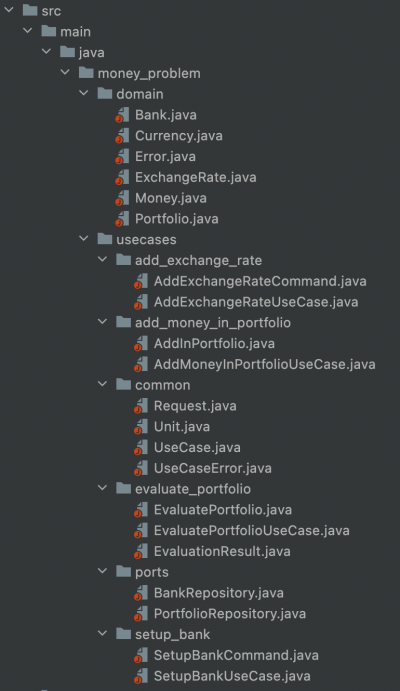
Why?
An important goal of Clean Architecture is to provide developers with a way to organize code in such a way that it encapsulates the business logic but keeps it separated from the delivery mechanism:
- Independent of frameworks
- Does not depend on the existence of libraries
- Allow us to use frameworks as tools (not a constraint)
- Independent of the front-end
- Can easily change the UI (from web to console)
- Independent of the database
- Business rules not bound to Database logic
- Independent of any external agency
- Business rules don’t know anything about outside world
Problems
- How may we cleanly encapsulate business logic?
- How can we define clear architecture rules (dependency, layers independance, ...)?
- How can we reach a screaming architecture?
Constraint
- if you start working on a new product: let's use this approach to design your implementation.
- if working on an existing code base: you can introduce it step-by-step by starting with
use cases
Resources
- Uncle Bob - The Clean Architecture
- The Clean Architecture book - Robert C. Martin
- Alistair Cockburn - Hexagonal Architecture
- Jeffrey Palermo - Onion Architecture
- Ivar Jacobson - Use Case Driven Approach
- TDD and Clean Architecture - Use Case Driven Development by Valentina Cupać
- Screaming architecture